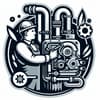Podcast
Questions and Answers
What are the three main types of communication models presented in the text?
What are the three main types of communication models presented in the text?
- Classic / Linear / Transmission, Interactive / Two Ways, Transactional (correct)
- Linear, Interactive, Transactional
- Classic, Interactive, Transactional
- Lasswell, Shannon & Weaver, Berlo
The Classical / Linear / Transmission model is considered a one-way communication model.
The Classical / Linear / Transmission model is considered a one-way communication model.
True (A)
What is the key difference between the Classical / Linear / Transmission model and the Interactive / Two Ways model?
What is the key difference between the Classical / Linear / Transmission model and the Interactive / Two Ways model?
The Interactive / Two Ways model considers feedback, which is absent in the Classical / Linear / Transmission model.
The Interactive / Two Ways model allows the ____ to know that the message was received.
The Interactive / Two Ways model allows the ____ to know that the message was received.
What is the main idea presented in the Transactional Model?
What is the main idea presented in the Transactional Model?
The Transactional Model is considered the most contemporary and effective model of communication.
The Transactional Model is considered the most contemporary and effective model of communication.
Flashcards
Linear or Classic Communication Model
Linear or Classic Communication Model
A model of communication where information flows in a single direction from a sender to a receiver, without any feedback.
Interactive Communication Model
Interactive Communication Model
A model of communication that includes feedback from the receiver to the sender, allowing for two-way interaction.
Transactional Communication Model
Transactional Communication Model
The most dynamic model where communication is considered a dynamic process involving multiple factors including shared experience, noise and overlapping time.
Sender
Sender
Signup and view all the flashcards
Receiver
Receiver
Signup and view all the flashcards
Message
Message
Signup and view all the flashcards
Channel
Channel
Signup and view all the flashcards
Feedback
Feedback
Signup and view all the flashcards
Noise
Noise
Signup and view all the flashcards
Encoding
Encoding
Signup and view all the flashcards
Decoding
Decoding
Signup and view all the flashcards
Field of Experience
Field of Experience
Signup and view all the flashcards
Classic Model - Lasswell Model
Classic Model - Lasswell Model
Signup and view all the flashcards
Classic Model - Shannon & Weaver Model
Classic Model - Shannon & Weaver Model
Signup and view all the flashcards
Classic Model - Berlo Model
Classic Model - Berlo Model
Signup and view all the flashcards
Transactional Communication Model - Wood (1998)
Transactional Communication Model - Wood (1998)
Signup and view all the flashcards
Direct Effect Theory
Direct Effect Theory
Signup and view all the flashcards
Communication as a Process
Communication as a Process
Signup and view all the flashcards
Communication Skills
Communication Skills
Signup and view all the flashcards
Communication Effect
Communication Effect
Signup and view all the flashcards
Interactive Communication Model - Sanford, Hunt, & Bracey (1987)
Interactive Communication Model - Sanford, Hunt, & Bracey (1987)
Signup and view all the flashcards
Contemporary Model/ Transactional
Contemporary Model/ Transactional
Signup and view all the flashcards
Interference
Interference
Signup and view all the flashcards
Communication Studies
Communication Studies
Signup and view all the flashcards
Effective Communication
Effective Communication
Signup and view all the flashcards
Adaptive Communication
Adaptive Communication
Signup and view all the flashcards
Mass Communication
Mass Communication
Signup and view all the flashcards
Interpersonal Communication
Interpersonal Communication
Signup and view all the flashcards
Interactive Communication Model - Schramm (1954)
Interactive Communication Model - Schramm (1954)
Signup and view all the flashcards
Communication
Communication
Signup and view all the flashcards
Linguistics
Linguistics
Signup and view all the flashcards
Study Notes
Communication Models
- Communication models describe the process of communication
- Different models represent various aspects of the communication process
- Models can be categorized as Linear, Interactive, and Transactional
Linear/Classical Model
- Information flows from a sender to a receiver through a channel
- Sender transmits a message, and the receiver receives it
- The sender does not receive feedback
- Example: Talking to someone who is ignoring you
Interactive Model
- Two-way communication
- Sender transmits a message to a receiver, and the receiver provides feedback
- Feedback allows the sender to know if the message was received
- Example: Having a conversation with someone
Transactional Model
- Communication is a continuous, simultaneous exchange
- The roles of sender and receiver change dynamically
- Communication involves multiple influences, such as shared experiences
- Participants are simultaneously senders and receivers
- Includes considerations of "noise" sources that disrupt communication
Encoding
- Converting thoughts into language or symbols
- Example: Putting thought or information into words
Decoding
- Interpreting the signs and symbols from a sender into meaning
- Example : The sender interprets the message and gives it meaning from his/her perspective
Feedback
- The receiver's response to the sender's message
- Allows the sender to adjust based on the outcome of the message
- Example : a response to the sender from the receiver about the accuracy and reception of the message
Noise
- Interference in the communication process such as language errors
- Can occur during encoding, transmitting, or decoding steps
Studying That Suits You
Use AI to generate personalized quizzes and flashcards to suit your learning preferences.





